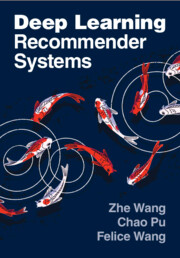Book contents
- Deep Learning Recommender Systems
- Reviews
- Deep Learning Recommender Systems
- Copyright page
- Contents
- Foreword
- Preface
- 1 Growth Engine of the Internet
- 2 Pre-Deep Learning Era
- 3 Top of the Tide
- 4 Application of Embedding Technology in Recommender Systems
- 5 Recommender Systems from Multiple Perspectives
- 6 Engineering Implementations in Deep Learning Recommender Systems
- 7 Evaluation in Recommender Systems
- 8 Frontier Practice of Deep Learning Recommender Systems
- 9 Build Your Own Recommender Systems Knowledge Framework
- Afterword
Foreword
Published online by Cambridge University Press: 08 May 2025
- Deep Learning Recommender Systems
- Reviews
- Deep Learning Recommender Systems
- Copyright page
- Contents
- Foreword
- Preface
- 1 Growth Engine of the Internet
- 2 Pre-Deep Learning Era
- 3 Top of the Tide
- 4 Application of Embedding Technology in Recommender Systems
- 5 Recommender Systems from Multiple Perspectives
- 6 Engineering Implementations in Deep Learning Recommender Systems
- 7 Evaluation in Recommender Systems
- 8 Frontier Practice of Deep Learning Recommender Systems
- 9 Build Your Own Recommender Systems Knowledge Framework
- Afterword
Information
- Type
- Chapter
- Information
- Deep Learning Recommender Systems , pp. xv - xviiiPublisher: Cambridge University PressPrint publication year: 2025
